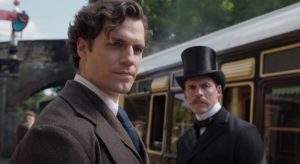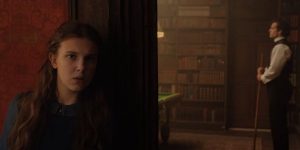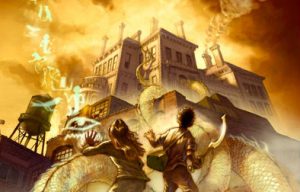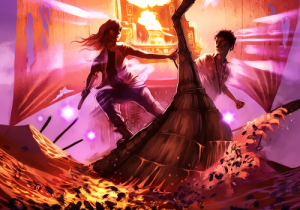The Witcher is back – and apparently, a couple of months in quarantine and self-isolation have done him wonders, as he’s emerged with a fabulous new look and a costume upgrade. I can’t say the same for the rest of us, but I’m excited to see some small signs of normalcy returning: it’s been months since The Witcher and virtually every other film and TV production around the world got delayed due to the sudden advent of the coronavirus crisis, and only just recently has filming been able to resume, with new safety protocols in place on set. Thankfully, the team at work on The Witcher‘s upcoming second season have been unusually generous, and have already gifted us two first look images of our fan-favorite protagonist, Geralt of Rivia, the Witcher himself.
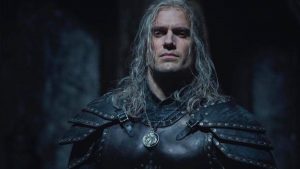
Henry Cavill is returning as expected to the popular role, but The Witcher costuming department has received a bit of a shake-up, with Lucinda Wright replacing Tim Aslam as lead costume designer. Wright, known best for her work on Doctor Who and a multitude of fashionable period pieces, has already brought a fresh, eye-catching new style to the fantasy series’ clothes, putting Geralt into a practical suit of armor. For much of season one, Geralt traveled around the Continent wearing loose-fitting or comfortable clothing: such as the now-iconic baggy shirt/tight leather pants combo (the subject of many a meme), and the padded leather pauldrons and breastplate, but season two appears to be heading into darker, grittier territory – Wright’s new design for Geralt’s outfit features almost Greco-Roman sensibilities, with armor sculpted around Henry Cavill’s muscles (a wise decision, since in season one, his muscles actually wore down his leather armor), and covered all around in studs and straps. He strikes an imposing figure, with his distinctive new silhouette.
My only complaint is with his new set of plated pauldrons: the armoring which covers his shoulders and upper arms. Even in season one, they didn’t look great, but these ones are slightly more unattractive, if I’m being honest. Then again, I’ve never been a big fan of pauldrons in any form: it’s an aesthetic thing. They’re usually too big and too bulky. Unfortunately, they’re also usually the first thing that I notice when I look at any suit of armor, as is the case here. Thankfully, a closer observation turns up many interesting little details on Geralt’s new costume that I do find genuinely exciting: for instance, his new thigh belts come with a whole bunch of sheathes, which I suppose are meant for knives and daggers. The sculpted detailing has already gone over very well with the fandom, which never misses an opportunity to lavish praises on Henry Cavill’s physique. As a side-note, Cavill’s silver wig also looks a lot better this time around: the long, tousled mane can be hit-or-miss depending on circumstances, but these photos caught it in a perfect state of realistic disarray.
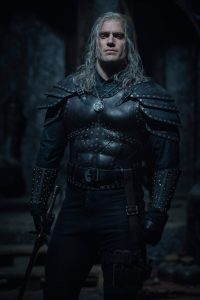
Along with the new look, Netflix has also given us a brief synopsis for season two, which confirms a little bit of what we already knew: in their words, “Convinced Yennefer’s life was lost at the Battle of Sodden, Geralt of Rivia brings Princess Cirilla to the safest place he knows, his childhood home of Kaer Morhen. While the Continent’s kings, elves, humans and demons strive for supremacy outside its walls, he must protect the girl from something far more dangerous: the mysterious power she possesses inside.” In the books, Cirilla (or Ciri, the name most people know her by at this point) is raised at Kaer Morhen to become the first female Witcher, and behind-the-scenes photos have already shown the Cintran princess sporting what looks to be an almost video-game-accurate outfit while training in the forest. This short synopsis also indicates that we won’t see Yennefer and Geralt reunite until later in the season, although we’re all pretty certain Yennefer isn’t dead despite expending all her chaos magic in defense of Sodden during the season one finale. Hopefully this just means Yennefer will have her own independent subplot happening simultaneously with the Geralt and Ciri arc: I would hate to have to wait throughout most of the season to see her again, after she was the best character in season one.
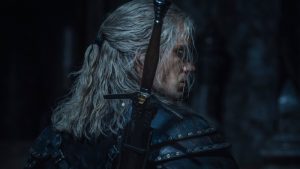
Netflix’s social media accounts have already hinted that we’ll get further material in the coming days: probably first look images for both Ciri’s armor and Yennefer’s new look (unless they’re keeping her resurrection more of a surprise, which I hope is not the case). There’s also a chance we might see Jaskier the bard again – in-universe, it’s been years since he was last seen, so it’ll be interesting to see if he’s aged at all, or if The Witcher really is just going to ignore that entirely. And with new spinoffs being considered and greenlit (a new one, focusing on The Continent’s order of Mages, was unofficially revealed just a few days ago), it looks like we’ll have much more Witcher content coming our way in no time. This first look is just the beginning.
What do you think of Geralt’s new suit of armor, and how do you feel it compares to his season one look? Share your own thoughts, theories and opinions in the comments below!

